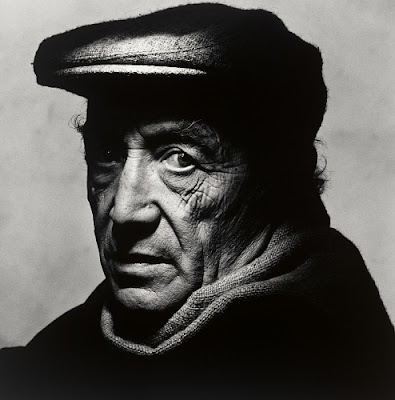-Whitney-Museum-of-American-Art-New-York.jpeg) |
| Isamu Noguchi Paris Abstraction ca. 1927-28 gouache on paper Whitney Museum of American Art, New York |
 |
| Isamu Noguchi Ruth Parks 1929 bronze Whitney Museum of American Art, New York |
 |
| Winold Reiss Isamu Noguchi ca. 1929 pastel on paper National Portrait Gallery, Washington DC |
 |
| Isamu Noguchi Abstract Composition 1930 pochoir Art Institute of Chicago |
 |
| Isamu Noguchi The Queen 1931 terracotta Whitney Museum of American Art, New York |
 |
| George Platt Lynes Isamu Noguchi ca. 1935 gelatin silver print National Portrait Gallery, Washington DC |
-1941-plaster-Los-Angeles-County-Museum-of-Art.jpg) |
| Isamu Noguchi Portrait Head (Fernand Léger) 1941 plaster Los Angeles County Museum of Art |
 |
| Isamu Noguchi Lunar Landscape 1943-44 embellished cement relief Hirshhorn Museum, Washington DC |
-Whitney-Museum-of-American-Art-New-York.jpeg) |
| Isamu Noguchi Work-Sheet for Sculpture 1945 gouache on paper Whitney Museum of American Art, New York |
 |
| Arnold Newman Isamu Noguchi 1947 gelatin silver print National Portrait Gallery, Washington DC |
 |
| Isamu Noguchi Rocking Stool 1955 teak and steel Art Institute of Chicago |
-Isamu-Noguchi-1955-gelatin-silver-print-National-Portrait-Gallery-Washington-DC.jpg) |
| Louise Dahl-Wolfe Isamu Noguchi 1955 gelatin silver print National Portrait Gallery, Washington DC |
 |
| Isamu Noguchi Enigma 1957 cast iron Guggenheim Museum, New York |
 |
| Isamu Noguchi Endless Coupling 1957 metal and stone Hirshhorn Museum, Washington DC |
 |
| Isamu Noguchi Lekythos 1958 marble Hirshhorn Museum, Washington DC |
 |
| Isamu Noguchi Grey Sun 1967 marble Smithsonian American Art Museum, Washington DC |
 |
| Irving Penn Isamu Noguchi 1983 gelatin silver print National Portrait Gallery, Washington DC |
from The Diary of the duc de L***
That night after the opera we walked
Where marigolds, obedient populace,
By day lend flame to the fountains but at night
Are caught up wholly in a quenching dark.
There were stars and, elsewhere, fireworks; and we went
Until we heard inside the summerhouse
The ancient princess at her spinet playing
And talking to herself when the music stopped.
What music fleshless as a theorem
And what mad voice –
– James Merrill (1947)